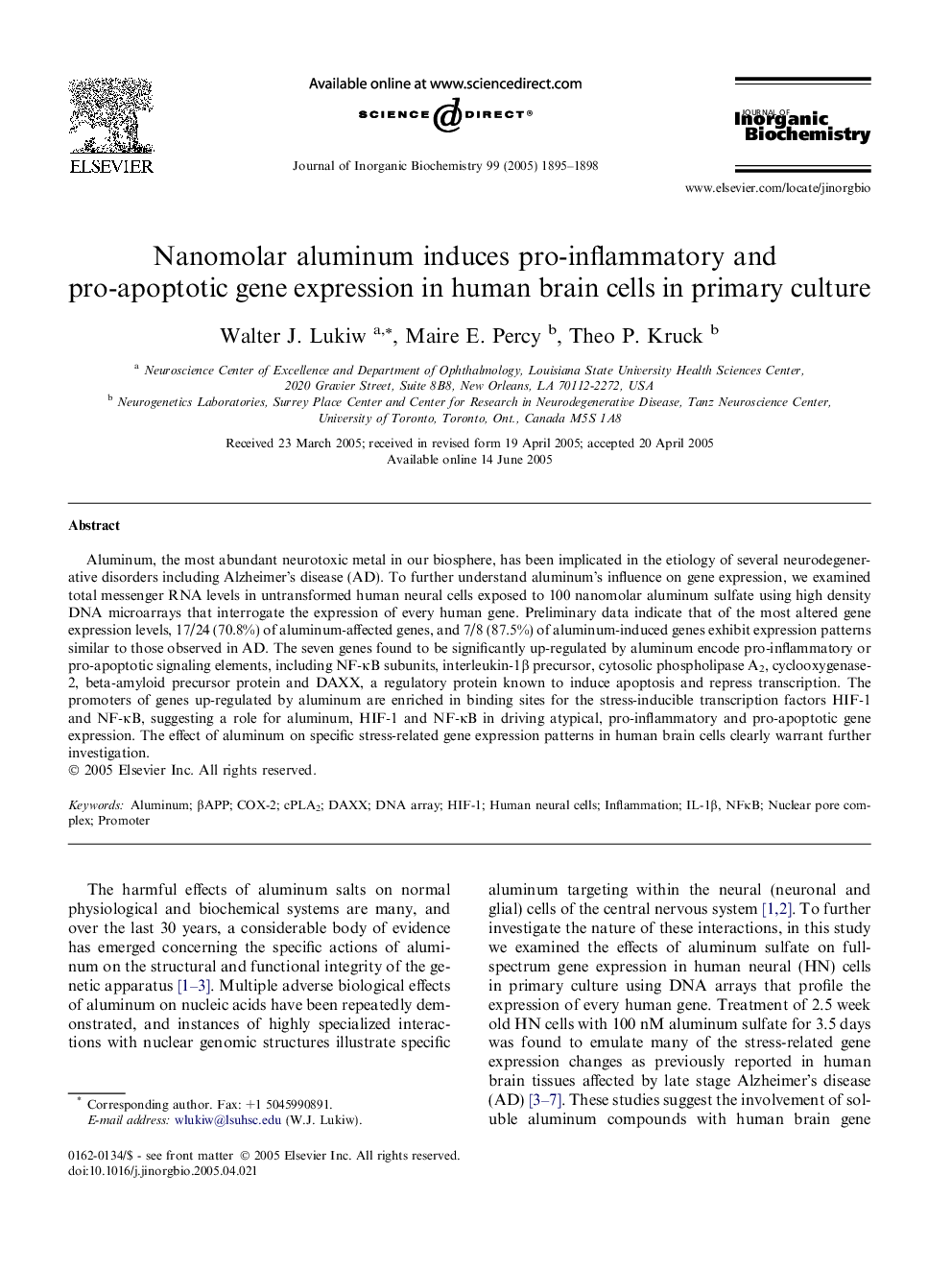| Article ID | Journal | Published Year | Pages | File Type |
|---|---|---|---|---|
| 10574489 | Journal of Inorganic Biochemistry | 2005 | 4 Pages |
Abstract
Aluminum, the most abundant neurotoxic metal in our biosphere, has been implicated in the etiology of several neurodegenerative disorders including Alzheimer's disease (AD). To further understand aluminum's influence on gene expression, we examined total messenger RNA levels in untransformed human neural cells exposed to 100 nanomolar aluminum sulfate using high density DNA microarrays that interrogate the expression of every human gene. Preliminary data indicate that of the most altered gene expression levels, 17/24 (70.8%) of aluminum-affected genes, and 7/8 (87.5%) of aluminum-induced genes exhibit expression patterns similar to those observed in AD. The seven genes found to be significantly up-regulated by aluminum encode pro-inflammatory or pro-apoptotic signaling elements, including NF-κB subunits, interleukin-1β precursor, cytosolic phospholipase A2, cyclooxygenase-2, beta-amyloid precursor protein and DAXX, a regulatory protein known to induce apoptosis and repress transcription. The promoters of genes up-regulated by aluminum are enriched in binding sites for the stress-inducible transcription factors HIF-1 and NF-κB, suggesting a role for aluminum, HIF-1 and NF-κB in driving atypical, pro-inflammatory and pro-apoptotic gene expression. The effect of aluminum on specific stress-related gene expression patterns in human brain cells clearly warrant further investigation.
Keywords
Related Topics
Physical Sciences and Engineering
Chemistry
Inorganic Chemistry
Authors
Walter J. Lukiw, Maire E. Percy, Theo P. Kruck,
